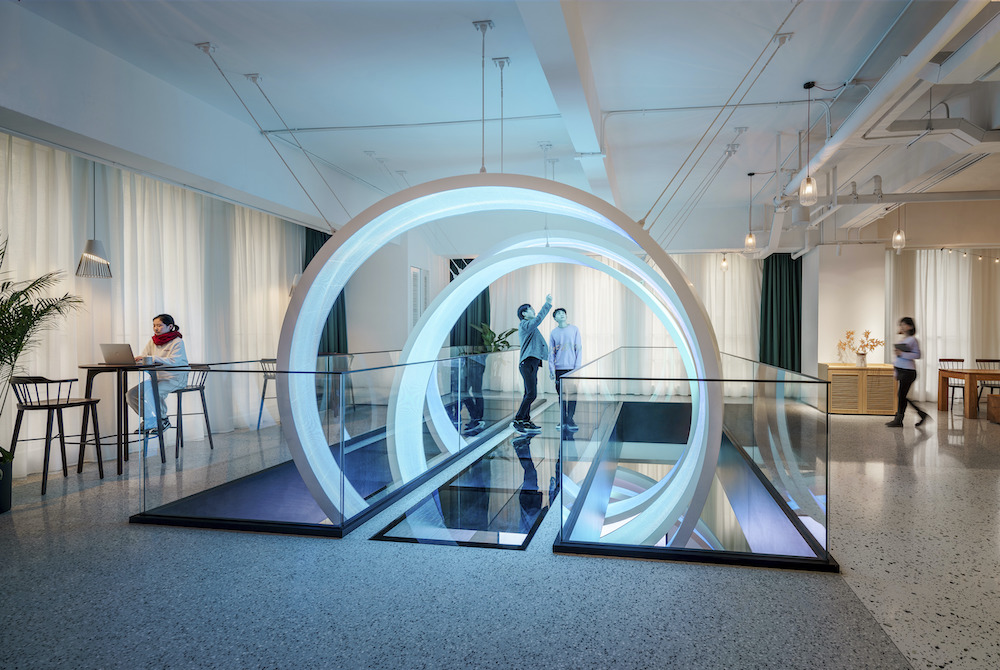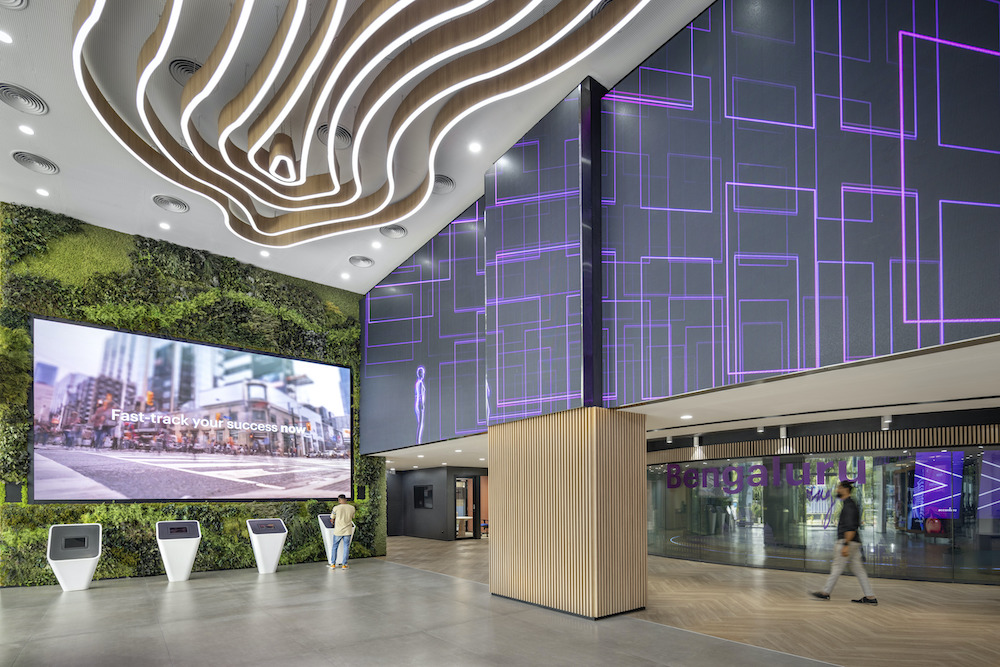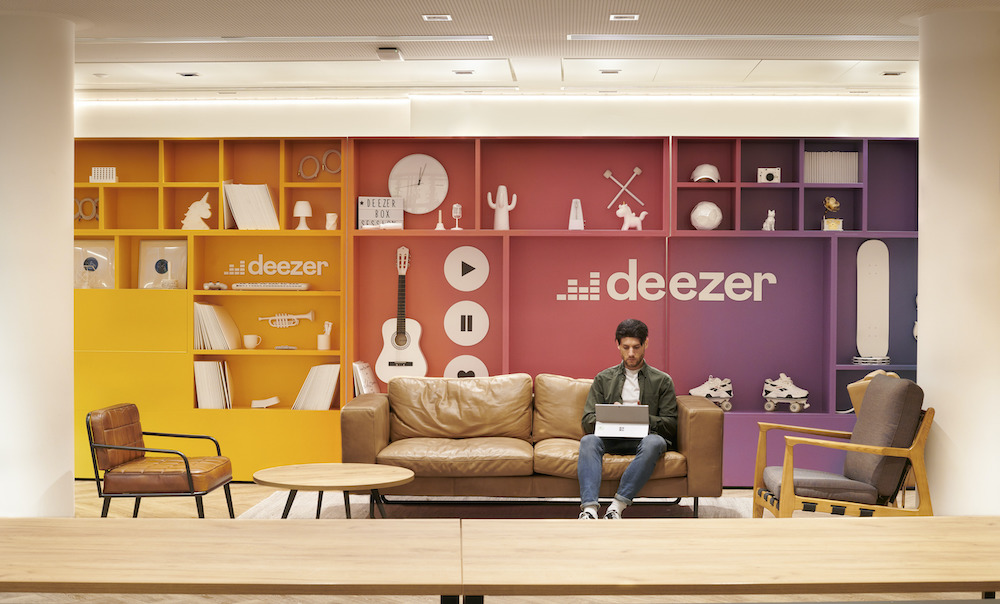M Moser’s Steve Gale shares why the future of work may turn out to be different, and why we need new skills to design the next generation of workplaces.
-

Lilith Games, Shanghai – Designed by M Moser Associates
The way an organisation commissions a workplace has not changed much over fifty years. From the first hint of a change, like a looming lease expiry or some predicted growth that needs a home, the usual players are assembled. They all know the rules of the game, and together they bear a project into what was once a fairly stable world. This time, could the post-pandemic age be an era of real change, and do we need to adapt our design approach to manage it?
Here are three reasons why the near future might turn out to be different, and why we need new skills to design the next generation of workplaces.
1. Survival of pandemic working patterns
Some people have always worked partly remotely, and this proportion has grown alongside blossoming internet coverage and reducing costs of technology. Now we see evidence that demand for remote working has become firmly established after the enforced pandemic experiment, and it looks like a much greater number of working days will be remote in the foreseeable future. To generalise, it seems that employees like working at home, even if their employers are often not quite so keen, and we should be prepared for a sea change.
2. The shift from physical to virtual
Entire industries are built on digital systems and all of us rely on the tools they provide. At unfeasible speed the cost of information storage and communication has reduced, while the power of processing has increased and the networks that link them have expanded. Artificial intelligence has democratised creativity, and the titans of software speak enthusiastically of an entire parallel existence in a metaverse.
In our working lives we could say the virtual workspace has grown to be more important than the physical one.
-

LinkedIn, Shanghai – Designed by M Moser Associates
3. The demand for talent
Organisations always want to hire the best people and one of the challenges is location. Tech businesses in particular have been engaged in open warfare for the last decade. The gap between supply and demand is partly to blame for unsustainable remuneration packages, inflated cost of city living and rapid staff turnover.
Employers chew over ways to resolve this perennial problem. One way is to make remote working the preferred option for employees, like the crypto trading platform Coinbase. The opposite approach is to design workspaces to attract people to your office. A famous example of this is Apple in Cupertino and other locations that provides world beating food offers, sleep pods, exercise parks, staff discounts and delivery services, car and bike parking, and an office environment carefully designed for health and wellbeing.

New Design Skills
Every organisation will now have to navigate into a future that cannot rely on past experience to carry them forward. How should workplace design roles change to help our clients find their way? Here are three areas of expertise we need to embrace in our design teams or in collaboration with others.
1. Long-term client engagement
This is a suggestion that the project approach might not have a long-term future. For decades workplaces have been commissioned and designed as one-off solutions expected to function for years with zero or minimal adaptation. This degree of confidence in fixed solutions is less than universal now, for the reasons noted above. The world has changed, and we need to get serious about flexibility.
As organisations plan for uncertainty, they will need help in adapting their working environment over time, and avoid being locked in to space that only supports one way of doing things. Let’s assume each organisation will try to develop its own progressive management structure and policies, it should be the design sector that comes up with responses for their working environment, and to do this the contractual engagement with a client must offer more than the traditional one-off project delivery.
An improvement would be an engagement that offers continuity so a client can rely on designers to adapt their workplace as things evolve. We have a good example of a tried and tested delivery model in software design that came about to resolve the same challenges in the tech world. Twenty years ago, the agile manifesto proposed a new approach which is now adopted everywhere in the industry. We can learn a lot from its focus on customer collaboration and responses to change, and how it has taken the software industry away from a product business to a service provider.
Our design management roles need to shift to continuous service and dump the “big bang” method of workplace procurement.
2. Data analysis
Real estate and workplace fit-outs are massive capital commitments and business cases forged in the post-pandemic fog will need much deeper analysis of historic working patterns to understand trends and their durability, or lack of it. Huge volumes of data will be available from CCTV, equipment monitors, access systems, Wi-Fi use patterns, environmental sensors and people counters to feed into new models of workplace provision.
Design decisions will need reliable interpretation of this data, and we must grasp that nettle to draw useful insights. The design sector is not renowned for its solid numeracy skill-base, but this has to change to deal with an uncertain future.
Designers could partner with people that already have those skills but a more effective route would be to bring analysts into the team, or for some team members to upgrade their ability in mathematical and statistical methods. Data analysis is an essential skill to guide ongoing workplace adaptation.

3. Systems engineering
The need to upgrade the workplace industry in its technology department is overdue. Up until recently the design of a workplace invoked technology in the form of consultants and suppliers who would add their contribution to networks, HVAC and audio-visual once a physical concept was drawn up. This process might have worked when the workplace consisted mainly of built components and furniture, but as we acknowledge above, this is no longer the case. The workplace is largely virtual, and most of us have learnt this by personal experience over the last couple of years.
To make a joined up workplace the design industry will need to integrate the technology skills that are currently outside the normal team members’ experience. We are at a point where the division of labour between architectural and engineering design is risky.
The workplace design team needs people to understand systems that harvest the data referred to above and guide clients through the fragmented market for the hardware and software with their direct experience. We should no longer leave these critical systems to a third party to define and specify.

Design is a Tech Business
Like so many other industries from banking to life science, workplace design needs to admit that it is, and should be, fully technologically enabled in order to service its clients who have already made that leap and adopt a service oriented engagement suited to its emerging role as adaptation partner. Interesting times.

